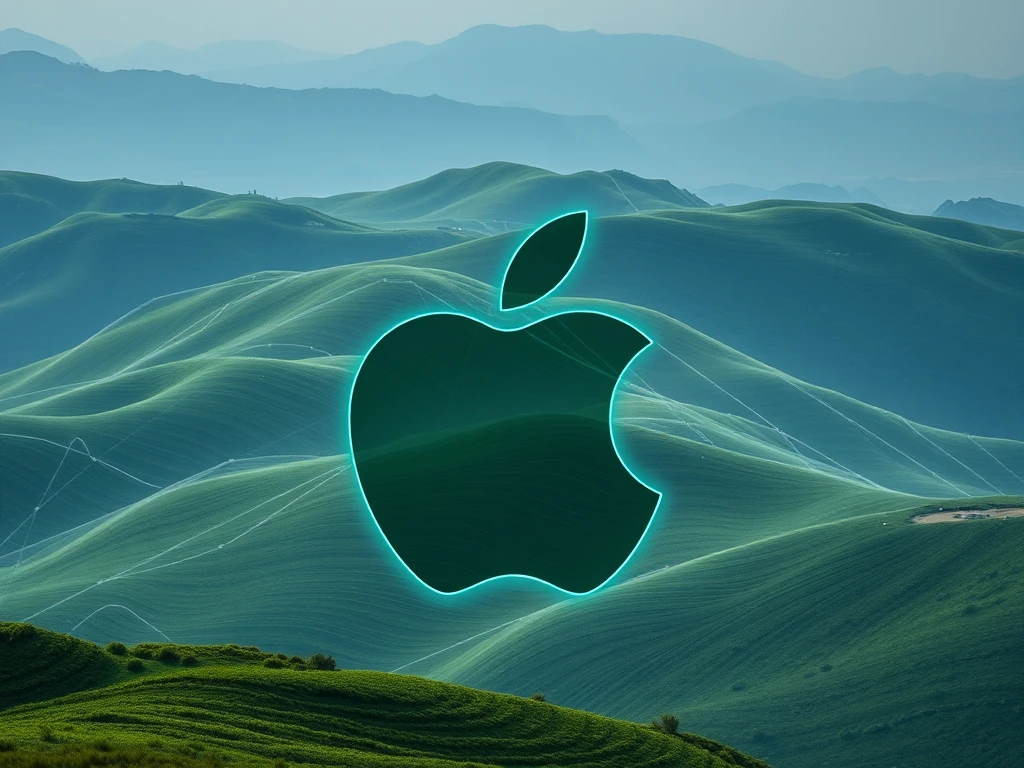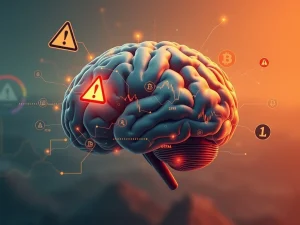Revolutionary Apple AI Chip Design Aims for Speed Boost

In the fast-paced world of technology, innovation drives everything from the devices we hold to the infrastructure supporting digital assets. Tech giants are constantly seeking edges, and the latest buzz suggests Apple is eyeing artificial intelligence to accelerate a critical process: designing its own custom chips. This potential move into advanced Apple AI chip design could reshape how future devices are built, impacting everything from performance to efficiency.
Apple Eyes Generative AI for Chip Speed
According to recent reports citing a speech by Apple’s senior vice president of hardware technologies, Johny Srouji, at the ITF World Conference in Belgium, the company is considering leveraging artificial intelligence, specifically generative AI, to speed up the design of its custom processors. Srouji emphasized the need for cutting-edge tools to handle the complexity of modern chip design. He stated that generative AI techniques have significant potential to achieve more design work in less time, offering a substantial productivity boost for engineering teams.
The Crucial Role of EDA AI Technology
Apple’s exploration of generative AI builds upon its existing relationships with Electronic Design Automation (EDA) companies. EDA tools are essential software suites used to design complex electronic systems like computer chips. Key players in this space, such as Cadence Design Systems and Synopsys, are already integrating AI and machine learning into their offerings to help tackle the increasing difficulty of chip design. Srouji highlighted the critical role of these EDA partners in supporting Apple’s design needs, noting their efforts to incorporate advanced EDA AI technology.
Apple’s Evolution in Custom Chips and AI
Apple has a long history of developing its own custom chips, starting with early iPhone processors and evolving to the powerful Apple custom chips found in Mac computers and the Vision Pro headset. While the idea of Apple using AI for chip design might sound new, reports suggest Apple has been using AI in some capacity for years, primarily through the advanced tools provided by its third-party EDA partners. The potential shift now is towards more direct use of generative AI, which could unlock entirely new methods for designing chips beyond current capabilities. This move signifies a deeper integration of AI into the core development process of Apple silicon.
Broader Industry Trends Beyond Apple Silicon
Apple’s focus on integrating AI into its core processes is part of a larger trend across the technology industry. While not directly related to chip design, recent news shows other tech giants are also heavily investing in and restructuring around AI. For instance, reports indicate Microsoft is planning significant job cuts, particularly in sales, as it streamlines its workforce and increases focus and investment in AI development. Similarly, Amazon CEO Andy Jassy recently commented that the rollout of generative and agentic AI is expected to reduce their total corporate workforce over the coming years. These examples highlight the industry-wide acceleration towards integrating AI into products, services, and internal workflows, positioning Apple’s exploration of Generative AI chip design within this broader context of technological transformation.
Conclusion: What This Means for Future Devices
Apple’s reported interest in using generative AI for custom chip design underscores its commitment to pushing the boundaries of hardware innovation. By potentially leveraging these advanced AI techniques alongside its EDA partners, Apple aims to make the complex process of designing its powerful processors faster and more efficient. This strategic move, building on years of AI-assisted workflows, could ultimately lead to even more powerful and capable Apple custom chips in future devices, impacting everything from computing performance to battery life. It’s a clear signal that AI is becoming an indispensable tool at the highest levels of hardware development, shaping the future of technology we use every day.









